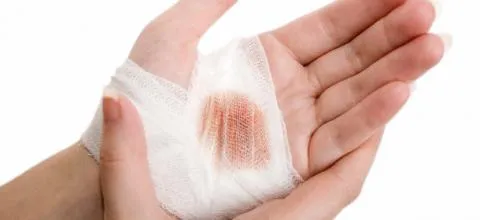One of the body's own tools for the prevention of infections wounds can actually interfere with healing, according to a new study of the Boston Children's Hospital, in the United States.
The authors of the Hospital Cellular and Molecular Medicine Program (PCMM) discovered that they could accelerate wound healing in diabetic mice, preventing immune cells called neutrophils from producing extracellular neutrophil traps (net, for its acronymin English) that catch bacteria.
The study, led by the PCMM main researcher Denisa Wagner and the postdoctoral scientist Siu Ling Wong and published in the digital edition of 'Nature Medicine', suggests that the methods to prevent the production of NET or adhesion to net in a wound could, one day, possibly, help relieve wound healing problems in diabetes patients.The delay in wound healing is a common complication of type 1 diabetes and type 2. For example, open diabetic foot ulcers affect a quarter of people with diabetes and are the main cause of amputations.
When the skin is cut or break, the body mobilizes a complicated set of cells and proteins to stop bleeding, prevent infection by activating inflammation and starting the healing process.As part of the inflammatory response, neutrophils, which ingest and destroy bacteria, expel their own chromatin (a mixture of associated DNA and proteins) in the form of NET inside the wound.
Although possibly beneficial as a tool to keep bacteria out of the body, NET also have a dark side."The net predispose patients to inflammation, heart disease and deep vein thrombosis [dangerous blood clots that are formed inside the deep veins within the body], all of them raised in patients with diabetes," Wagner explains, explainswho also a Pediatrics professor at Harvard Medical School.
To see if diabetes prepares neutrophils to produce Net, Wagner, Wong and their colleagues from the Joslin Diabetes Center and the State University of Pennsylvania examined the neutrophils of patients with type 1 or type 2 diabetes, finding that the cells contained fourtimes the normal amount of PAD4 (a key enzyme in the NET production process) and generate more net when they are stimulated.
Other laboratory experiments revealed that healthy donors neutrophils or mice when exposed to excess glucose -imitating the diabetic environment-were also more likely to release Net than those of normal glucose levels.Diabetic mice in the study had more net on wounds and cured more slowly than normal mice.
However, Wagner and Wong's team found that healing accelerated in diabetic mice that lacked PAD4 and, therefore, could not produce Net.The research team treated the mice with DNASA 1, an enzyme that breaks down the DNA and, therefore, can destroy Net.
After three days, wounds in diabetic animals treated with DNASA 1 were 20 percent smaller than in the un treated and, curiously, the treatment with DNASA 1 accelerated the healing of wounds in healthy mice as well.
Wagner and Wong explain that NETs can prevent wounds in part because the dense toxic mesh that produces interferes with new skin cells trying to enter the wound site.They also propose that nets may not be necessary as a defense mechanism against bacteria.
"We do not fully understand the functions of the net, but all the othersAntimicrobial functions of neutrophils are preserved even if they cannot manufacture the net, "says Wagner." Any injury that causes inflammation will lead to the production of netof repair, "he concludes.



